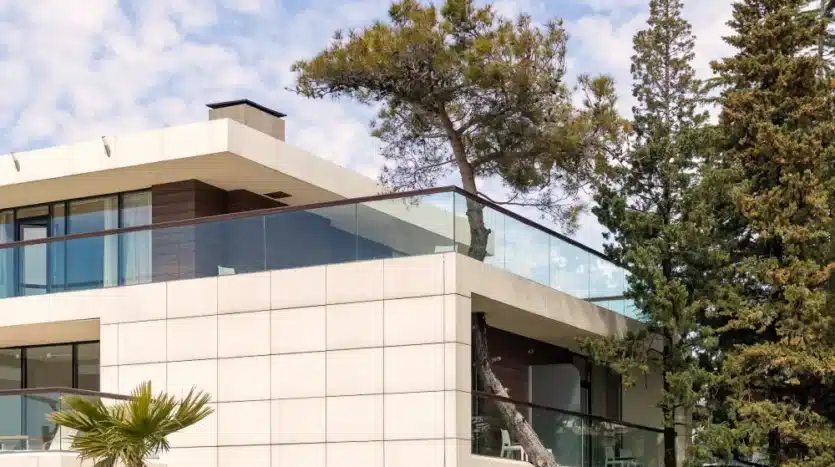Green Living in Jakarta: Eco-Friendly Apartments
Green Living in the City: Eco-Friendly Apartments and Sustainable Amenities in Jakarta
In a city known for its density, traffic, and relentless pace, the idea of green living in Jakarta might sound like a luxury. Yet, it is slowly becoming a necessity. According to data from the Green Building Council Indonesia (GBCI), the number of certified green buildings in the country has grown more than tenfold in the past decade, and Jakarta leads the way with more than 70 percent of these developments. What was once seen as an architectural novelty has now evolved into a movement shaping how Jakartans choose to live.
The growing awareness of climate change, combined with escalating energy costs and the city’s vulnerability to pollution, has pushed both developers and residents to rethink their living environments. Modern apartments across Jakarta are no longer designed just for comfort or convenience, but also for sustainability. Developers are blending efficiency, community, and environmental responsibility into the new definition of urban luxury.
A Shift Toward Sustainable Urban Living
Jakarta’s skyline tells a story of rapid transformation. Over the last decade, the city has seen an influx of mixed-use developments, vertical housing projects, and integrated townships. Yet, beneath the glass and concrete, a quiet revolution is taking place. More residents are looking for spaces that align with their environmental values, pushing demand for sustainable apartments higher than ever before.
Urban planners have long argued that sustainable design is not only about aesthetics but also about functionality and resilience. As temperatures in the capital continue to rise and flooding becomes more frequent, green living has become part of the city’s long-term survival strategy. Apartments built with passive cooling, energy-efficient lighting, and better waste management systems are now viewed not just as an eco-conscious choice, but as a practical response to Jakarta’s environmental challenges.
The appeal also lies in lifestyle. Young professionals and families are increasingly attracted to developments that promise cleaner air, lower energy costs, and healthier community spaces. Green living is gradually moving from niche to mainstream, supported by both policy and shifting social values.
The Rise of Eco-Friendly Apartments in Jakarta
Jakarta’s property landscape has seen a surge in eco-friendly apartments that integrate sustainability into every aspect of their design. These buildings are more than just aesthetic achievements, they are carefully engineered to reduce environmental impact. Many are developed according to GBCI’s Greenship standards, Indonesia’s own version of the global LEED certification.
Projects like those in Sudirman, Kuningan, and the emerging districts of BSD and Alam Sutera highlight this trend. Developers are increasingly aware that green credentials can enhance long-term property value and attract discerning buyers. For residents, living in such apartments means reduced electricity bills, better air circulation, and access to open green spaces that offer psychological relief from the city’s density.
Energy conservation has also become a selling point. In a typical Jakarta apartment, energy consumption is dominated by air conditioning, lighting, and water heating. Developers now use advanced insulation materials, reflective roofs, and intelligent ventilation systems to cut down these loads. The result is not just lower costs, but also a tangible contribution to reducing the city’s overall carbon footprint.
Energy-Efficient Designs and Smart Building Features
The heart of sustainable living in Jakarta’s apartments lies in their energy-efficient designs. Architecture firms are increasingly integrating principles of passive design to minimize artificial cooling and lighting. Large windows, cross-ventilation layouts, and open corridors help natural light and air circulate more freely, reducing the need for mechanical systems.
In several high-end developments, rooftop solar panels are beginning to supplement power for common areas, while motion-sensor LED systems keep energy use efficient. Smart thermostats, automated shading systems, and building management apps allow residents to monitor their consumption in real time, turning sustainability into a daily habit rather than an abstract concept.
Beyond technology, the use of local and recycled materials also plays a role. Developers are opting for certified timber, recycled concrete, and low-emission paints that contribute to healthier indoor environments. It’s a sign that green living in Jakarta is not just about adding eco-friendly gadgets, but rethinking construction from the ground up.
Sustainable Amenities and Green Infrastructure
What sets Jakarta’s new wave of eco-friendly apartments apart is how they redefine urban amenities. In the past, luxury meant swimming pools and fitness centers. Today, it includes rooftop gardens, rainwater harvesting systems, and electric vehicle charging points. These are no longer gimmicks but essential features that reflect a broader shift toward sustainability in city living.
Community gardens, for example, are becoming more common in mid- to high-end developments. Residents grow herbs and vegetables in shared spaces, turning unused rooftops and courtyards into productive green areas. These gardens not only reduce the heat island effect but also foster social interaction and a sense of belonging.
Green rooftops and vertical landscaping contribute to improved air quality and better stormwater management. They act as natural insulators, reducing indoor temperatures and the need for excessive air conditioning. Meanwhile, water-saving fixtures, greywater recycling systems, and on-site waste composting further reduce environmental strain.
Such initiatives demonstrate that sustainable amenities can coexist with comfort and aesthetics. Developers are learning that people are drawn to spaces that feel alive, where sustainability is seamlessly integrated into the experience of everyday living.
Waste Management: From Sorting to Sustainability
Jakarta’s waste problem has long been one of its most pressing urban challenges. The city produces more than 7,000 tons of waste daily, much of which ends up in landfills. Forward-thinking apartment developers are taking this seriously by introducing structured waste segregation systems, recycling stations, and partnerships with community-based waste organizations.
In newer residential complexes, residents are encouraged to separate organic and inorganic waste, often supported by digital platforms that track recycling participation. Some developments even host composting workshops or provide bins for biodegradable waste that feed small on-site composting systems. These efforts may seem small, but they build collective responsibility among residents and reduce the burden on city waste infrastructure.
Developers are also collaborating with Jakarta’s Environmental Agency (DLH) to ensure their waste management aligns with citywide sustainability goals. It is not unusual to see apartment buildings where waste disposal systems are integrated with ventilation and odor control, a thoughtful touch that makes sustainable habits more practical and appealing.
The Role of Developers and Urban Planners
Behind Jakarta’s green transformation lies the collaboration between urban planners, architects, and developers who see sustainability not as a marketing feature but as a necessity. Local regulations, such as the Green Building Regulation No. 38/2012, have set minimum standards for energy use, water efficiency, and building materials. These guidelines have influenced the direction of private sector investment and design philosophy.
Developers now compete on how “green” their projects can be. Large-scale property groups have begun investing in sustainability-driven masterplans, integrating residential units with green corridors, pedestrian pathways, and access to public transport. This approach doesn’t just improve living standards, it also reduces reliance on private vehicles and encourages more walkable communities.
Urban planners emphasize that sustainable housing must be seen in the context of the broader city. Eco-friendly apartments alone cannot make Jakarta greener unless they connect with public parks, transit systems, and flood-resilient infrastructure. The future of sustainable living depends on this holistic connection between the building and the city fabric around it.
Challenges and Opportunities Ahead
Despite the growing enthusiasm for sustainable living in Jakarta, several challenges remain. Building green costs more upfront, mainly due to imported materials and technology. Many developers are still hesitant, fearing that buyers may not yet be willing to pay the premium associated with eco-friendly construction. There’s also a lack of widespread awareness among residents about what sustainable living truly entails beyond energy-saving appliances.
However, opportunities are expanding. As more young professionals and families value sustainability, the market for eco-friendly apartments continues to grow. Financial institutions are starting to offer green financing schemes that make such investments more accessible. In addition, local governments are exploring incentives for developers who meet higher sustainability standards.
Technology will also play a larger role in bridging these gaps. With better access to data and monitoring tools, developers can design more efficient systems, and residents can make smarter choices. Jakarta’s green building scene is still young, but its momentum is unmistakable.
Living Green: The Resident’s Perspective
Beyond the architecture and technology, the real essence of green living in Jakarta lies in its people. Residents are beginning to see that sustainability is not just the responsibility of developers but a shared lifestyle choice. Simple actions, like conserving water, reducing plastic waste, or choosing public transport over private cars, collectively make a difference.
Many communities are organizing eco-friendly activities, such as recycling drives or plant exchange days, that nurture environmental awareness. In apartments with green spaces, residents enjoy better air quality, cooler temperatures, and a closer sense of community. These small lifestyle shifts contribute to a healthier, more connected urban experience.
Green living has become an expression of identity among Jakarta’s younger generation. It reflects a desire to live consciously, balancing the conveniences of city life with care for the environment. In a city often associated with pollution and congestion, this shift toward sustainability represents hope for a better urban future.
Toward a Greener Jakarta
Jakarta’s journey toward sustainable living is still evolving, but its direction is clear. Eco-friendly apartments and sustainable amenities are redefining what it means to live well in the city. They show that progress and environmental responsibility can coexist, that modern comfort can be achieved without compromising the planet’s health.
The movement depends on everyone involved—developers who innovate, planners who design responsibly, policymakers who enforce sustainability standards, and residents who make green choices part of their daily lives. If this collaboration continues, Jakarta could become a model of sustainable urban living in Southeast Asia, proving that even in the busiest metropolis, it’s possible to build harmony between people, buildings, and nature.
Photo by Majid Gheidarlou on Unsplash












